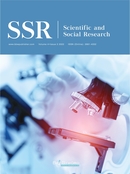Abstract
Translation is a vital activity with a lengthy history that touches every aspect of human life. Translation is a complex activity with rich connotations, and Chinese and Western scholars have long debated what is the “best translation.” This paper examines the translation theories of Lu Xun’s stiff translation, “Catford’s Translation Linguistics,” and “Qian Zhongshu’s Huajing” in order to discuss what kind of translation is acceptable in the setting of the times.
References
Liang S, 2002, The Collected Writings of Liang Shiqiu. Lujiang Publishing House, Xiamen, 348.
Lei Y, Zhang F, 2000, Cultural Transformation: The Significance and Value of Lu Xun’s Translation Activities in the Process of Chinese Society. Lu Xun Studies Monthly, 2000(12): 35-37.
Yang XY, Dai N, 1991, The Complete Works of Lu Xun (Book IV), People’s Literature Publishing House, Beijing, 346-347.
Lu X, 1981, Memorial Committee. The Complete Works of Lu Xun, People’s Literature Publishing House, Beijing, 4.
Baker M, 2019, Corpus Linguistics and Translation Studies: Implications and Applications, in Researching Translation in the Age of Technology and Global Conflict, Routledge, 9-24.
Zhang Z, Peng F, 2015, A Concise Course on Chinese and Western Translation Theory (English Version), Tsinghua University Press, Beijing, 179-180.
Qian Z, 2004, The Translation of Lin Shu, in Chan CT, Twentieth-Century Chinese Translation Theory, John Benjamins, Amsterdam and Philadelphia, 104.
Wang L, 2015, There Are the Best Girls in the World, Not the Best Translators. College Student, 2015(5): 64-65.
